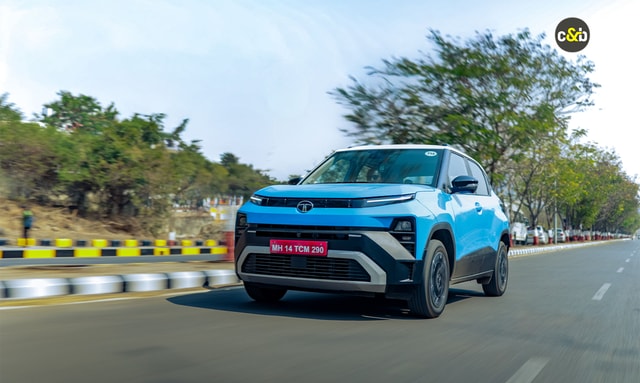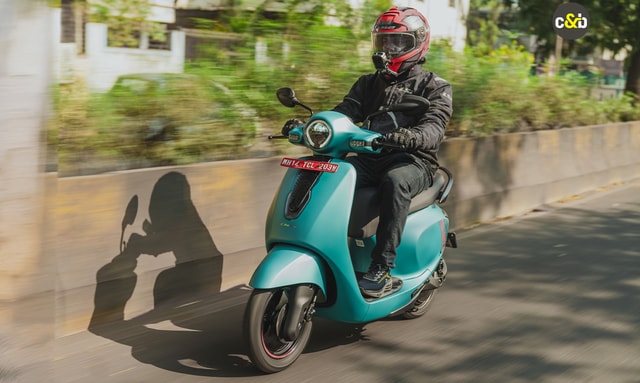Highways & Traffic Lane Rules

- Driving on the high road is not a seamless job.
- Here's an insightful guide that briefly lets you learn all the rules
- In this read, you can learn about the traffic lane rules as well
Rather than handing over your car keys to a driver, you probably prefer driving your car all by yourself. That's what has made you come to this post and read about the highways and traffic lane rules.


#1 Broken White Line:
Around the nation, that's the most widespread road kind used. The broken white line offers permissions to change the lanes and take the U-turns. However, you must also require ensuring that the road is safe and clear.
#2 White Line (Continuous):
The continuous line is a tad stricter. On the road, you wouldn't get the allowance to overtake any other vehicle and neither can you take the U-turns. In case you are on this road type, ensure that you maintain a straight line while moving. Crossing a line is allowed to avoid accidents and take turns. These roads are mainly seen in hilly areas with higher chances of accidents.
#3 A Continuous Line in Yellow:
On these roads, you can overtake other vehicles only when you're on your own side. Crossing a yellow line is not permitted for each side. The roads are seen usually in areas with low visibility and establish the need for staying on the side of the road.
#4 Yellow Line (Broken):
Possibly, the lenient one in this list is the broken yellow line! You get the allowance to overtake and take the U-turns. You might do both when going over the lines, but you need to do everything safely.
#5 Continuous Yellow Line (Double):
The continuous yellow line happens to be the strictest road type in this particular list. It implies that crossing a line is not permitted strictly for each side. Hence, you cannot also overtake – neither U-turns nor lane changes. That pattern is seen on the dangerous two-lane roads with higher chances of disasters.
Understanding the lane system in India

One more significant component that practically all the road users in the country do not adhere to is a lane system. Every lane in between road lines allows just particular kinds of automobiles to pass through it. Unfortunately, lane regulations are rarely enforced in the nation.
On the roadways, individuals openly disregard all of these rules and drive anywhere they please. It's one of the key factors why vehicle accidents increase in the area, particularly on the highways. With the ever-improving structures of the road, individuals must also be taught on utilizing them effectively to develop the transportation infrastructure of the country holistically. So, let's take a look at the lane system of the country.
What to learn before you drive on highways?
Highways are a significant source of crashes in a country like India. Again, it's because people are unaware of the driving rules applicable for highways. Unlike city roads, you get no signals on the highways. Nowadays, there are three-lane highways that have become quite common in the nation. The structures work as slowly, medium, and fast as you go from the leftmost to the rightmost lane.
On the highways, staying at the centre lane becomes an ideal choice. Slower cars would be on the left, but quicker vehicles would overtake them from right positions. If you're in a right lane and the quicker car comes up behind you, simply signal to the left. After the quicker car has passed, you can return to a fast lane.
Another essential consideration is the usage of a high beam. At greater speeds, multiple windblasts are on the roadways. In such cases, the horn's honking may be inaudible due to wind noise. To grab the attention of the motorist ahead, all you need is to flash the headlights at moments. Another crucial thing to remember is to not turn the way from right to left lanes and even vice versa. The method for the two-lane highways is similar to that of two-lane city roads. That concludes the discussion of the various road kinds and a lane system used in the nation.
Latest News
 Bilal Firfiray | Jan 22, 2026Volvo EX60 Revealed With 810km Range And 10-Minute Fast Charge CapabilityVolvo unveils the all-electric EX60 SUV with up to 810km range, 10-minute fast charging, Google Gemini AI, and next-gen safety, setting a new benchmark in the midsize EV segment.1 min read
Bilal Firfiray | Jan 22, 2026Volvo EX60 Revealed With 810km Range And 10-Minute Fast Charge CapabilityVolvo unveils the all-electric EX60 SUV with up to 810km range, 10-minute fast charging, Google Gemini AI, and next-gen safety, setting a new benchmark in the midsize EV segment.1 min read Janak Sorap | Jan 21, 20262026 Triumph Trident 660 and Tiger Sport 660 Unveiled; India Launch This YearBased on the setup offered on the Daytona 660, this is the most comprehensive update the Trident and Tiger Sport has received since their introduction.3 mins read
Janak Sorap | Jan 21, 20262026 Triumph Trident 660 and Tiger Sport 660 Unveiled; India Launch This YearBased on the setup offered on the Daytona 660, this is the most comprehensive update the Trident and Tiger Sport has received since their introduction.3 mins read Jaiveer Mehra | Jan 21, 2026New Mercedes-Benz S-Class Previewed Ahead Of Jan 29 Global DebutMercedes says that over 50 per cent of the parts in the upcoming S-class are new, with the car also set to be L4 autonomous driving ready.3 mins read
Jaiveer Mehra | Jan 21, 2026New Mercedes-Benz S-Class Previewed Ahead Of Jan 29 Global DebutMercedes says that over 50 per cent of the parts in the upcoming S-class are new, with the car also set to be L4 autonomous driving ready.3 mins read car&bike Team | Jan 21, 20262026 Jeep Meridian Updated With Sliding Second Row Seats; Prices Start At Rs. 23.33 LakhThe update is limited to select three-row variants of the Jeep Meridian, namely, Limited and Overland.1 min read
car&bike Team | Jan 21, 20262026 Jeep Meridian Updated With Sliding Second Row Seats; Prices Start At Rs. 23.33 LakhThe update is limited to select three-row variants of the Jeep Meridian, namely, Limited and Overland.1 min read Jaiveer Mehra | Jan 21, 2026Skoda Kylaq Classic+, Prestige+ Prices RevealedSkoda has also confirmed a new Sportline variant that will join the lineup later in the year.1 min read
Jaiveer Mehra | Jan 21, 2026Skoda Kylaq Classic+, Prestige+ Prices RevealedSkoda has also confirmed a new Sportline variant that will join the lineup later in the year.1 min read Jaiveer Mehra | Jan 20, 2026Tata Punch Facelift Bharat NCAP Crash Test Scores Revealed; Gets 5-Star RatingFacelifted internal combustion Punch secures 30.58 out of 32 for adult occupant protection and 45 out of 49 for child occupant protection.1 min read
Jaiveer Mehra | Jan 20, 2026Tata Punch Facelift Bharat NCAP Crash Test Scores Revealed; Gets 5-Star RatingFacelifted internal combustion Punch secures 30.58 out of 32 for adult occupant protection and 45 out of 49 for child occupant protection.1 min read
 Bilal Firfiray | Jan 21, 2026Tata Punch Facelift Review: New Turbo Engine; Same Old SoulWith the update, the Tata Punch facelift retains its character of being a healthy runabout, which is perfect for Indian roads. But have these changes made it any better?7 mins read
Bilal Firfiray | Jan 21, 2026Tata Punch Facelift Review: New Turbo Engine; Same Old SoulWith the update, the Tata Punch facelift retains its character of being a healthy runabout, which is perfect for Indian roads. But have these changes made it any better?7 mins read Amaan Ahmed | Jan 17, 2026Bajaj Chetak C25 First Ride Review: Basic, Likeable E-Scooter For First-Time RidersThe Chetak C25, in quite a few ways, is poles apart from the larger and more powerful 30 and 35 Series models, but in its mannerisms, it is very much a Chetak.8 mins read
Amaan Ahmed | Jan 17, 2026Bajaj Chetak C25 First Ride Review: Basic, Likeable E-Scooter For First-Time RidersThe Chetak C25, in quite a few ways, is poles apart from the larger and more powerful 30 and 35 Series models, but in its mannerisms, it is very much a Chetak.8 mins read Bilal Firfiray | Jan 9, 2026Toyota Urban Cruiser Hyryder: 10,000 km Long-Term ReviewAfter spending over three months and 10,000 km with the Toyota Urban Cruiser Hyryder Hybrid, we were impressed by its real-world mileage, seamless hybrid, practical comfort, and Toyota reliability. Is it the best C-SUV then?5 mins read
Bilal Firfiray | Jan 9, 2026Toyota Urban Cruiser Hyryder: 10,000 km Long-Term ReviewAfter spending over three months and 10,000 km with the Toyota Urban Cruiser Hyryder Hybrid, we were impressed by its real-world mileage, seamless hybrid, practical comfort, and Toyota reliability. Is it the best C-SUV then?5 mins read Seshan Vijayraghvan | Jan 8, 20262026 Mahindra XUV 7XO Review: Big On Tech, Bigger On ComfortThe new Mahindra XUV 7XO is flashier, feature packed, and comes with more advanced tech. But are the changes just incremental or actually substantial?1 min read
Seshan Vijayraghvan | Jan 8, 20262026 Mahindra XUV 7XO Review: Big On Tech, Bigger On ComfortThe new Mahindra XUV 7XO is flashier, feature packed, and comes with more advanced tech. But are the changes just incremental or actually substantial?1 min read Preetam Bora | Jan 10, 2026Simple One Gen 2 First Ride Review: 265 km Claimed Range!The Gen 2 model of Simple Energy’s first electric scooter gets a fair few updates, including new features, tech, more range and lighter weight. We spent a couple of hours with the Simple One Gen 2 to find out if it manages to impress.6 mins read
Preetam Bora | Jan 10, 2026Simple One Gen 2 First Ride Review: 265 km Claimed Range!The Gen 2 model of Simple Energy’s first electric scooter gets a fair few updates, including new features, tech, more range and lighter weight. We spent a couple of hours with the Simple One Gen 2 to find out if it manages to impress.6 mins read






















































































































